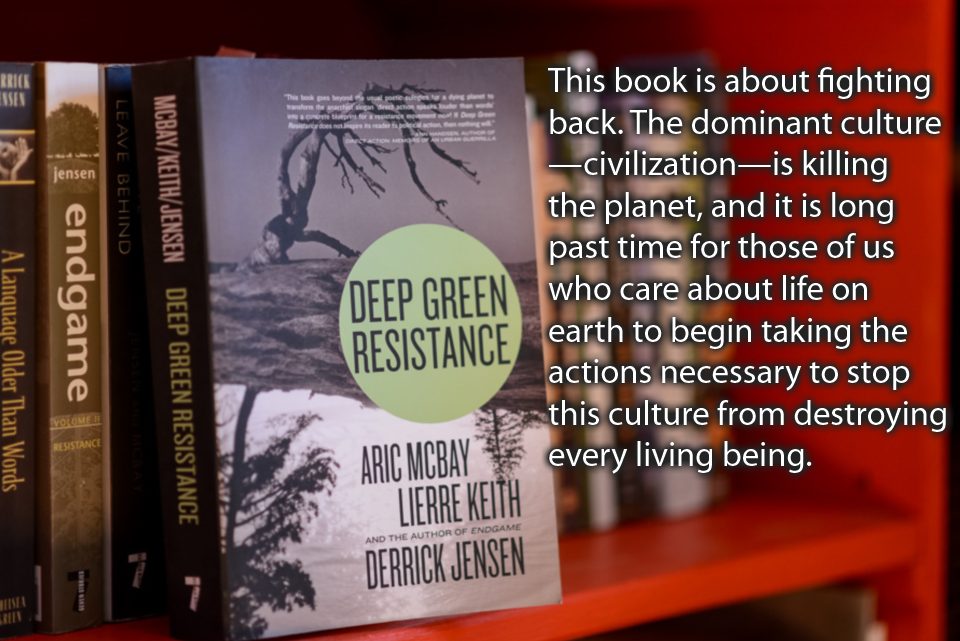
by DGR Colorado Plateau | Oct 12, 2015 | Strategy & Analysis
Book Review of Deep Green Resistance: A Strategy to Save the Planet
By Zoe Blunt
I first heard about Deep Green Resistance in the middle of a grassroots fight to stop a huge vacation-home subdivision at a wilderness park on Vancouver Island. Back then, it hadn’t really occurred to me that a book on environmental strategy was needed. Now I can tell you, it’s urgent.
Deep Green Resistance (DGR) made me a better strategist. If you’re an activist, then this book is for you. But be warned: at 520 pages (plus endnotes), it’s not light reading. Quite the opposite — DGR dares environmental groups to focus on decisive tactics rather than mindless lobbying and silly stunts.
“This book is about fighting back. And this book is about winning,” author Derrick Jensen declares in the preface to this three-way collaboration with Lierre Keith and Aric McBay.
Keith, author of The Vegetarian Myth, opens the discussion with an analysis of why “traditional” environmental action is self-defeating. For those who’ve read Jensen’s Endgame, or who have experienced the frustration of born-to-lose activism, Keith’s analysis hits the nerve.
The DGR philosophy was born from failure. In a recent interview, Jensen recounts a 2007 conversation with fellow activists who asked, “Why is it that we’re doing so much activism, and the world is being killed at an increasing rate?” “This suggests our work is a failure,” Jensen concludes. “The only measure of success is the health of the planet.”
If we keep to this course, as Keith points out, the outcome is extinction: the death of species, of people, and the planet itself. Environmental “solutions” are by now predictable, and totally out of scale with the threat we’re facing. Cloth bags, eco-branded travel mugs, hemp shirts, and recycled flip-flops won’t change the world. Wishful thinking aside, they can’t, because they don’t challenge the industrial machine. It just keeps grinding out tons of waste for every human on the earth, whether they are vegan hempsters who eat local or not. So these “solutions” amount to fiddling while the world burns.
Aric McBay, organic farmer and co-author of What We Leave Behind, says Deep Green Resistance “is about making the environmental movement effective.”
“Up to this point, you know, environmental movements have relied mostly on things like petitions, lobbying, and letter-writing,” McBay says. “That hasn’t worked. That hasn’t stopped the destruction of the planet, that hasn’t stopped the destruction of our future. So the point is if we want to be effective, we have to look at what other social movements, what other resistance movements have done in the past.”
Keith notes that a given tactic can be reformist or radical, depending on how it’s used. For example, we don’t often think of legal strategies as radical, but if it’s a mass campaign with an “or else” component that empowers people and brings a decisive outcome, then it creates fundamental change.
“Don’t be afraid to be radical,” Keith advises in a recent interview. “It’s emotional, yes; this is difficult for people, but we are going to have to name these power structures and fight them. The first step is naming them, then we’ve got to figure out what their weak points are, and then organize where they are weak and we are strong.”
Powerful words. But by then I was desperate for a blueprint, a guidebook, some signposts to help break the deadlock in our campaign to save the park. Two hundred pages into DGR, we get down to brass tacks, and find out what strategic resistance looks like.
I don’t know what I was expecting, but it wasn’t a guerrilla uprising.
To be clear, Deep Green Resistance is an aboveground, nonviolent movement, but with a twist: it calls for the creation of an underground, militant movement. The gift of this book is the revelation that strategies used by successful insurgencies can be used just as successfully by nonviolent campaigns.
McBay argues convincingly that it’s the combination of peaceful and militant action that wins. He emphasizes that people must choose between aboveground tactics and underground tactics, because trying to do both at once will get you caught.
“The cases of Dr. Martin Luther King Jr. and Malcolm X exemplify how a strong militant faction can enhance the effectiveness of less militant tactics,” McBay writes. “Some presume that Malcolm X’s ‘anger’ was ineffective compared to King’s more ‘reasonable’ and conciliatory position. That couldn’t be further from the truth. It was Malxolm X who made King’s demands seem eminently reasonable, by pushing the boundaries of what the status quo would consider extreme.”
What McBay calls “decisive ecological warfare” starts with guerrilla movements and the Art of War. Guerrilla fighting is all about asymmetric warfare. One side is well-armed, well-funded, and highly disciplined, and the other side is a much smaller group of irregulars. And yet sometimes the underdog wins. It’s not by accident, and it’s not because they are all nonviolent and pure of heart, but because they use their strengths effectively. They hit where it counts. The rebels win the hearts and minds and, crucially, the hands-on support of the civilian populace. That’s what turns the tide.
McBay notes, for example, that land reclamation has proven to be a decisive strategy. He argues that “aboveground organizers [should] learn from groups like the Landless Workers’ Movement in Latin America.” This ongoing movement “has been highly successful at reclaiming ‘underutilized’ land, and political and legal frameworks in Brazil enable their strategy,” McBay adds.
Imagine two million people occupying the Tar Sands. Imagine blocking or disrupting crucial supply lines. Imagine profits nose-diving, investors bailing out, brokers panic-selling, and the whole top-heavy edifice crashing to a halt.
The Landless Workers’ Movement operates openly. Another group, the Underground Railroad, was completely secret. Members risked their lives to help slaves escape to Canada. A similar network could help future resisters flee state persecution. Those underground networks need to form now, McBay says, before the aboveground resistance gets serious, and before the inevitable crackdown comes.
DGR categorizes effective actions as either shaping, sustaining, or decisive. If a given tactic doesn’t fit one of those categories, it is not effective, McBay says. He emphasizes, however, that all good strategies must be adaptable.
To paraphrase a few nuggets of wisdom:
Stay mobile.
Get there first with the most.
Select targets carefully.
Strike and get away.
Use multiple attacks.
Don’t get pinned down.
Keep plans simple.
Seize opportunities.
Play your strengths to their weakness.
Set reachable goals.
Follow through.
Protect each other.
And never give up.
Guerrilla warfare is not a metaphor for what’s happening to the planet. The forests, the oceans, and the rivers are victims of bloody battles that start fresh every day. Here in North America, it’s low-intensity conflict. Tactics to keep the populace in line are usually limited to threats, intimidation, arrests, and so on.
But the “war in the woods” gets real here, too. I’ve been shot at by loggers. In 1999, they burned our forest camp to the ground and put three people in the hospital. In 2008, two dozen of us faced a hundred coked-up construction workers bent on beating our asses.
Elsewhere, it’s a shooting war. Canadian mining companies kill people as well as ecosystems. We are responsible for stopping them. We know what’s happening. Failing to take effective action is criminal collusion.
Wherever we are, whatever we do, they’re murdering us. They’re poisoning us. Enbridge, Deepwater Horizon, Exxon, Shell, Suncor and all their corporate buddies are poisoning the air, the water, and the land. We know it and they know it. Animals are dying and disappearing. There will be no end to the destruction as long as there is profit in it.
This work is scary as hell. That’s why we need to be really brave, really smart and really strategic.
We have strengths our opponents will never match. We’re smarter and more flexible than they are, and we’re compelled by an overwhelming motivation: to save the planet. We’re fighting for our survival and the survival of everyone we love. They just want more money, and the only power they know is force.
As Jensen says, ask a ten-year-old what we should do to stop environmental disasters that are caused in large part by the use of fossil fuels, and you’ll get a straightforward answer: stop using fossil fuels. But what if the companies don’t want to stop? Then make them stop.
Ask a North American climate-justice campaigner, and you’re likely to hear about media stunts, Facebook apps, or people stripping and smearing each other with molasses. Not to diss hard-working activists, but unless they are building strength and unity on the ground, these tactics won’t work. They’re not decisive. They’re just silly.
Of course, if the media stunts are the lead-in to mass, no-compromise, nonviolent action to shut down polluters, I’ll see you there. I’ll even do a striptease to celebrate.
© 2012 Zoe Blunt
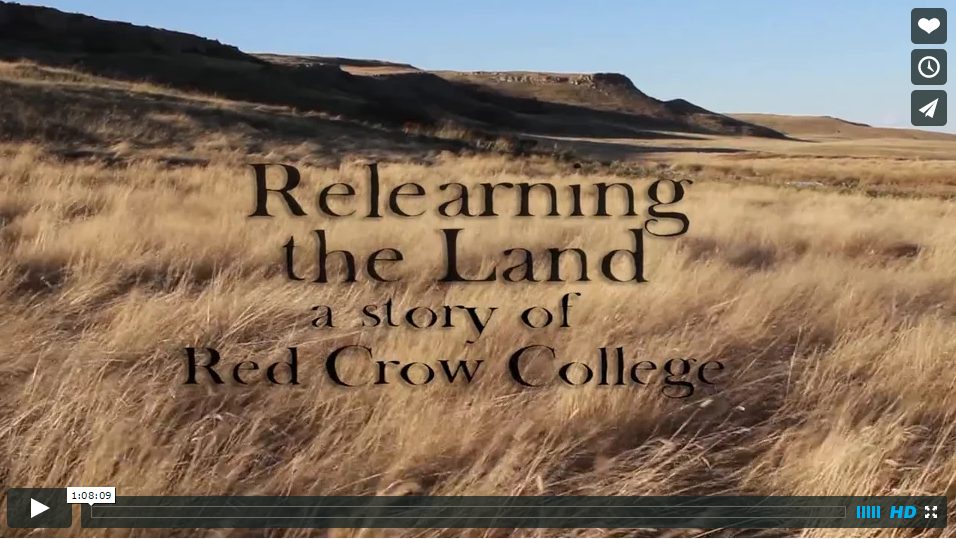
by DGR Colorado Plateau | Sep 30, 2015 | Building Alternatives, Indigenous Autonomy
By Intercontinental Cry
RE-LEARNING THE LAND is the story of a Blackfoot community in southern Alberta, Canada, and how they have re-taken control of their education system within Red Crow Community College. The film traces the decolonization of their learning and the development of an innovative program, Kainai Studies, within Red Crow College, the same site as a former Residential School. The Kainai Studies program is reclaiming and teaching to a new generation the Blackfoot knowledge system that sustained their community on their land for thousands of years.
The film raises a host of important questions related to the purpose of education and what it takes to create a deep ecological consciousness and connection with our local environment. By witnessing how students and faculty within Red Crow College are re-building relationships with the land around them, we see a greater sense of purpose, confidence and identity from amongst those participating and learning within the Kainai Studies program.
RE-LEARNING THE LAND explores how education can be used both to wipe out particular ways of knowing and lead to suffering, as in the case of residential schools, or else to promote healing and a transformation of individual and community through a reconnection to history and place. Based on a very different cosmology, set of values and ways of teaching, RE-LEARNING THE LAND is a subtle exploration of how an indigenous way of learning can create transformational relationships with the land, its beings, the community and one’s own self.
RE-LEARNING THE LAND
- Produced by: Enlivened Learning
- Directed, filmed and edited by: Udi Mandel, Kelly Teamey
- Additional Footage by: Narcisse Blood, Ryan Heavy Head
- Artwork by: Ali Hodgson, Manuela Pereira
- Official Website: films.enlivenedlearning.com
by DGR Colorado Plateau | Jun 22, 2015 | Building Alternatives, Gender, Strategy & Analysis
In 1993 Michael Carter was arrested and indicted for underground environmental activism. Since then he’s worked aboveground, fighting timber sales and oil and gas leasing, protecting endangered species, and more. Today, he’s a member of Deep Green Resistance Colorado Plateau, and author of the memoir Kingfishers’ Song: Memories Against Civilization.
Time is Short spoke with him about his actions, underground resistance, and the prospects and problems facing the environmental movement. The first part of this interview is available here, and the second part here.
Time is Short: You mentioned some problems of radical groups—lack of respect for women and lack of a strategy. Could you expand on that?
Michael Carter: Sure. To begin with, I think both of those issues arise from a lifetime of privilege in the dominant culture. Men in particular seem prone to nihilism; I certainly was. Since we were taught—however unwittingly—that men are entitled to more of everything than women, our tendency is to bring this to all our endeavors.
I will give some credit to the movie “Night Moves” for illustrating that. The men cajole the woman into taking outlandish risks and they get off on the destruction, and that’s all they really do. When an innocent bystander is killed by their action, the woman has an emotional breakdown. She’s angry with the men because they told her no one would get hurt, and she breaches security by talking to other people about it. Their cell unravels and they don’t even explore their next options together. Instead of providing or even offering support, one of the men stalks and ultimately kills the woman to protect himself from getting caught, then vanishes back into mainstream consumer culture. So he’s not only a murderer but ultimately a cowardly hypocrite, as well.
Honestly, it appears to be more of an anti-underground propaganda piece than anything. Or maybe it’s just a vapid film, but it does have one somewhat valid point—that we white Americans, particularly men, are an overprivileged self-centered lot who won’t hesitate to hurt anyone who threatens us.
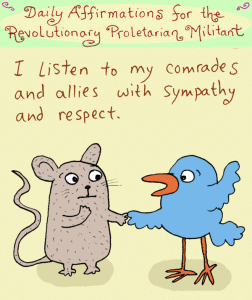
Artwork by Stephanie McMillan
That’s a fictional example, but any female activist can tell you the same thing. And of course misogyny isn’t limited to underground or militant groups; I saw all sorts of male self-indulgence and superiority in aboveground circles, moderate and radical both. It took hindsight for me to recognize it, even in myself. That’s a central problem of radical environmentalism, one reason why it’s been so ineffective. Why should any woman invest her time and energy in an immature movement that holds her in such low regard? I’ve heard this complaint about Occupy groups, anarchists, aboveground direct action groups, you name it.
Groups can overcome that by putting women in positions of leadership and creating secure, uncompromised spaces for them to do their work. I like to reflect on the multi-cultural resistance to the Burmese military dictatorship, which is also a good example of a combined above- and underground effort, of militant and non-violent tactics. The indigenous people of Burma traditionally held women in positions of respect within their cultures, so they had an advantage in building that into their resistance movements, but there’s no reason we couldn’t imitate that anywhere. Moreover, if there are going to be sustainable and just cultures in the future, women are going to be playing critical roles in forming and running them, so men should be doing everything possible to advocate for their absolute human rights.
As for strategy, it’s a waste of risk-taking for someone to cut down billboards or burn the paint off bulldozers. It’s important not to equate willingness with strategy, or radicalism and militancy with intelligence. For example, I just noticed an oil exploration subcontractor has opened an office in my town. Bad news, right? I had a fleeting wish to smash their windows, maybe burn the place down. That’ll teach ‘em, they’ll take us seriously then. But it wouldn’t do anything, only net the company an insurance settlement they’d rebuild with and reinforce the image of militant activists as mindless, dangerous thugs.
If I were underground, I’d at least take the time to choose a much more costly and hard-to-replace target. I’d do everything I could to coordinate an attack that would make it harder for the company to recover and continue doing business. And I’d only do these things after I had a better understanding of the industry and its overall effects, and a wider-focused examination of how that industry falls into the mechanism of civilization itself.
By widening the scope further, you see that ending oil and gas development might better be approached from an aboveground stance—by community rights initiatives, for example, that have outlawed fracking from New York to Texas to California. That seems to stand a much better chance of being effective, and can be part of a still wider strategy to end fossil fuel extraction altogether, which would also require militant tactics. You have to make room for everything, any tactic that has a chance of working, and begin your evaluation there.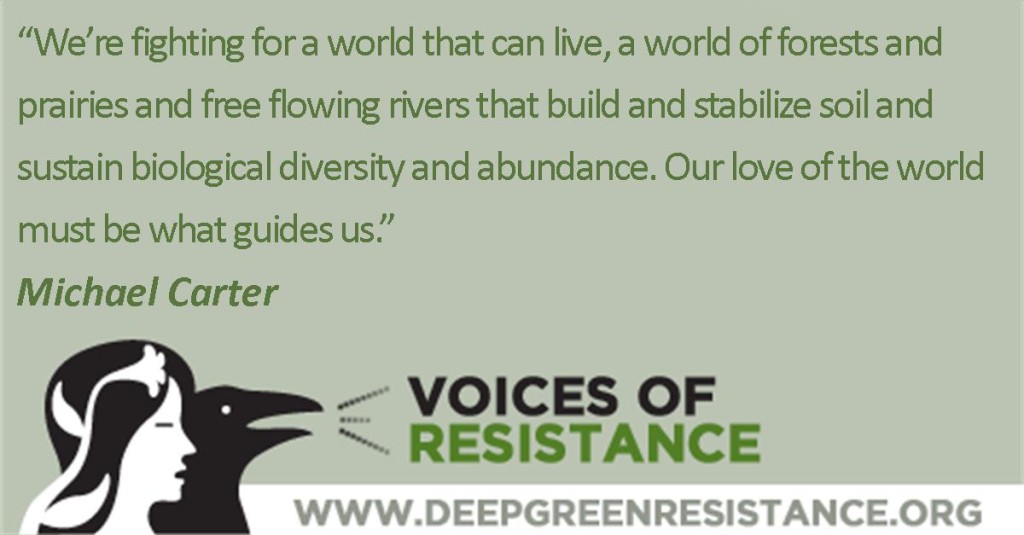
To use the Oak Flat copper mine example, now the mine is that much closer to happening, and the people working against it have to reappraise what they have available. That particular issue involves indigenous sacred sites, so how might that be respectfully addressed, and employed in fighting the mine aboveground? Might there be enough people to stop it with civil disobedience? Is there any legal recourse? If there isn’t, how might an underground cell appraise it? Are there any transportation bottlenecks to target, any uniquely expensive equipment? How does timing fit in? How about market conditions—hit them when copper prices are down, maybe? Target the parent company or its other subsidiaries? What are the company’s financial resources?
An underground needs a strategy for long-term success and a decision-making mechanism that evaluates other actions. Then they can make more tightly focused decisions about tactics, abilities, resources, timing, and coordinated effort. The French Resistance to the Nazis couldn’t invade Berlin, but they sure could dynamite train tracks. You wouldn’t want to sabotage the first bulldozer you came across in the woods; you’d want to know who it belonged to, if it mattered, and that you weren’t going to get caught. Maybe it belongs to a habitat restoration group, who can say? It doesn’t do any good to put a small logging contractor out of business, and it doesn’t hurt a big corporation to destroy machinery that is inexpensive, so those questions need to be answered beforehand. I think successful underground strikes must be mostly about planning; they should never, never be about impulse.
TS: There are a lot of folks out there who support the use of underground action and sabotage in defense of Earth, but for any number of reasons—family commitments, physical limitations, and so on—can’t undertake that kind of action themselves. What do you think they can do to support those willing and able to engage in militant action?
MC: Aboveground people need to advocate underground action, so those who are able to be underground have some sort of political platform. Not to promote the IRA or its tactics (like bombing nightclubs), but its political wing of Sinn Fein is a good example. I’ve heard a lot of objections to the idea of advocating but not participating in underground actions, that there’s some kind of “do as I say, not as I do” hypocrisy in it, but that reflects a misunderstanding of resistance movements, or the requirements of militancy in general. Any on-the-ground combatant needs backup; it’s just the way it is. And remember that being aboveground doesn’t guarantee you any safety. In fact, if the movement becomes effective, it’s the aboveground people most vulnerable to harm, because they’re going to be well known. In that sense, it’s safer to be underground. Think of the all the outspoken people branded as intellectuals and rounded up by the Nazis.
The next most important support is financial and material, so they can have some security if they’re arrested. When environmentalists were fighting logging in Clayoquot Sound on Vancouver Island in the 1990s, Paul Watson (of the Sea Shepherd Conservation Society) offered to pay the legal defense of anyone caught tree spiking. Legal defense funds and on-call pro-bono lawyers come immediately to mind, but I’m sure that could be expanded upon. Knowing that someone is going to help if something horrible happens, combatants can take more initiative, can be more able to engineer effective actions.
We hope there won’t be any prisoners, but if there are, they must be supported too. They can’t just be forgotten after a month. As I mentioned before, even getting letters in jail is a huge morale booster. If prisoners have families, it’s going to make a big difference for them to know that their loved ones aren’t alone and that they will have some sort of aboveground material support. This is part of what we mean when we talk about a culture of resistance.
TS: You’ve participated in a wide range of actions, spanning the spectrum from traditional legal appeals to sabotage. With this unique perspective, what do you see as being the most promising strategy for the environmental movement?
MC: We need more of everything, more of whatever we can assemble. There’s no denying that a lot of perfectly legal mainstream tactics can work well. We can’t litigate our way to sustainability any more than we can sabotage our way to sustainability; but for the people who are able to sue the enemy, that’s what they should be doing. Those who don’t have access to the courts (which is most everyone) need to find other roles. An effective movement will be a well-organized movement, willing to confront power, knowing that everything is at stake.
Decisive Ecological Warfare is the only global strategy that I know of. It lays out clear goals and ways of arranging above- and underground groups based on historical examples of effective movements. If would-be activists are feeling unsure, this might be a way for them to get started, but I’m sure other plans can emerge with time and experience. DEW is just a starting point.
Remember the hardest times are in the beginning, when you’re making inevitable mistakes and going through abrupt learning curves. When I first joined Deep Green Resistance, I was very uneasy about it because I still felt burned out from the ‘90s struggles. What I’ve discovered is that real strength and endurance is founded in humility and respect. I’ve learned a lot from others in the group, some of whom are half my age and younger, and that’s a humbling experience. I never really understood what a struggle it is for women, either, in radical movements or the culture at large; my time in DGR has brought that into focus.
Look at the trans controversy; here are males asking to subordinate women’s experiences and safe spaces so they can feel comfortable. It’s hard for civilized men to imagine relationships that aren’t based on the dominant-submissive model of civilization, and I think that’s what the issue is really about—not phobia, not exclusionary politics, but rather role-playing that’s all about identity. Male strength traditionally comes from arrogance and false pride, which naturally leads to insecurity, fear, and a need to constantly assert an upper hand, a need to be right. A much more secure stance is to recognize the power of the earth, and allow ourselves to serve that power, not to pretend to understand or control it.
 TS: We agree that time is not on our side. What do you think is on our side?
TS: We agree that time is not on our side. What do you think is on our side?
MC: Three things: first, the planet wants to live. It wants biological diversity, abundance, and above all topsoil, and that’s what will provide any basis for life in the future. I think humans want to live, too; and more than just live, but be satisfied in living well. Civilization offers only a sorry substitute for living well to only a small minority.
The second is that activists now have a distinct advantage in that it’s easier to get information anonymously. The more that can be safely done with computers, including attacking computer systems, the better—but even if it’s just finding out whose machinery is where, how industrial systems are built and laid out, that’s much easier to come by. On the other hand the enemy has a similar advantage in surveillance and investigation, so security is more crucial than ever.
The third is that the easily accessible resources that empires need to function are all but gone. There will never be another age of cheap oil, iron ore mountains, abundant forest, and continents of topsoil. Once the infrastructure of civilized humanity collapses or is intentionally broken, it can’t really be rebuilt. Then humans will need to learn how to live in much smaller-scale cultures based on what the land can support and how justly they treat one another. That will be no utopia, of course, but it’s still humanity’s best option. The fight we’re now engaged in is over what living material will be available for those new, localized cultures—and more importantly, the larger nonhuman biological communities—to sustain themselves. What polar bears, salmon, and migratory birds need, we will also need. Our futures are forever linked.
Time is Short: Reports, Reflections & Analysis on Underground Resistance is a bulletin dedicated to promoting and normalizing underground resistance, as well as dissecting and studying its forms and implementation, including essays and articles about underground resistance, surveys of current and historical resistance movements, militant theory and praxis, strategic analysis, and more. We welcome you to contact us with comments, questions, or other ideas at undergroundpromotion@deepgreenresistance.org
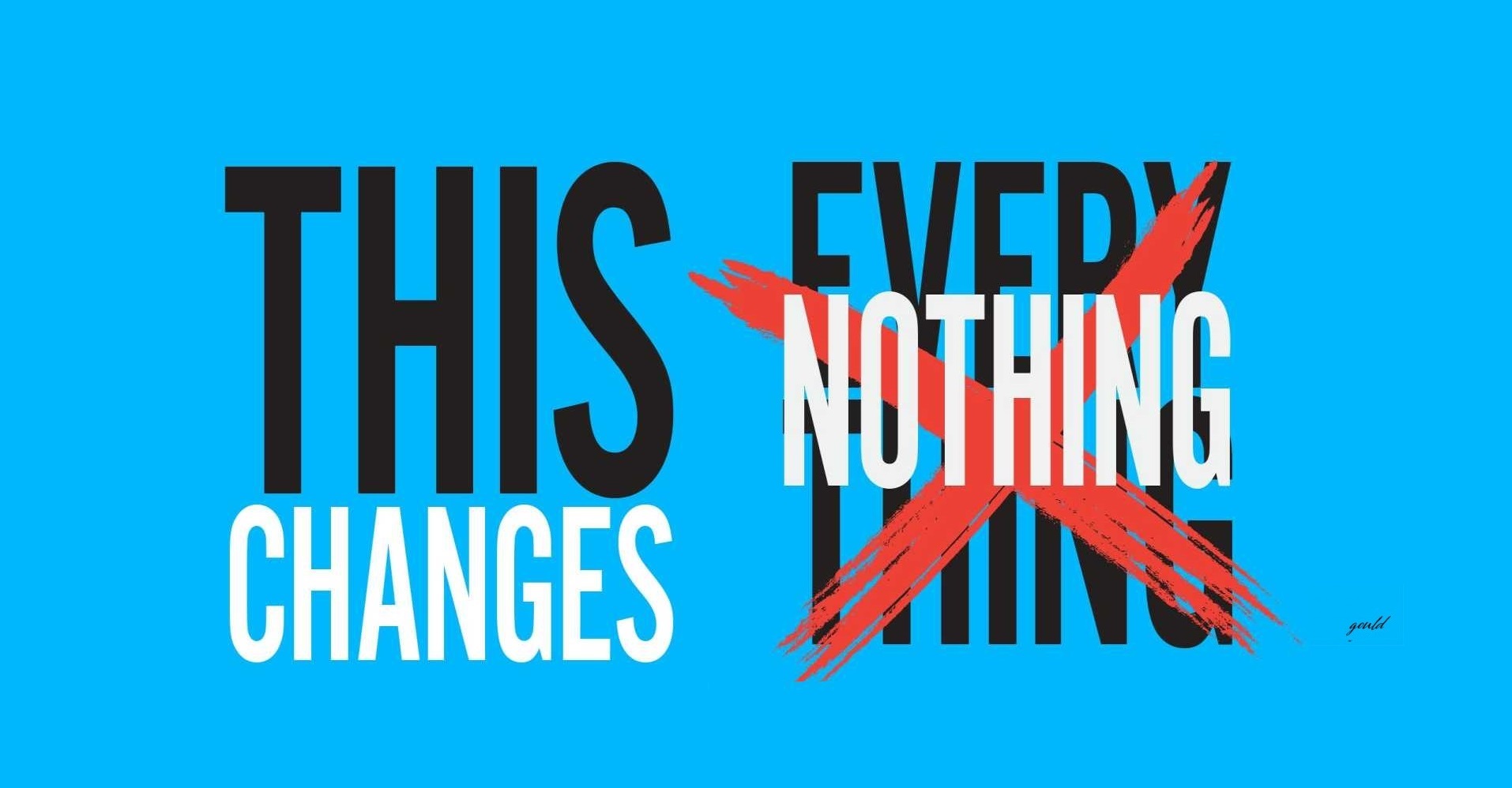
by Deep Green Resistance News Service | Feb 7, 2015 | Climate Change, Strategy & Analysis
By Kim Hill / Deep Green Resistance Australia
Naomi Klein’s latest book, This Changes Everything, is based on the premise that capitalism is the cause of the climate crisis, and to avert catastrophe, capitalism must go. The proposed solution is a mass movement that will win with arguments that undermine the capitalist system by making it morally unacceptable.
This premise has many flaws. It fails to acknowledge the roots of capitalism and climate change, seeing them as independent issues that can be transformed without taking action to address the underlying causes. Climate change cannot be avoided by building more infrastructure and reforming the economy, as is suggested in the book. The climate crisis is merely a symptom of a deeper crisis, and superficial solutions that act on the symptoms will only make the situation worse. Human-induced climate change started thousands of years ago with the advent of land clearing and agriculture, long before capitalism came into being. The root cause—a culture that values domination of people and land, and the social and physical structures created by this culture—needs to be addressed for any action on capitalism or climate to be effective.
I’ve long been baffled by the climate movement. When 200 species a day are being made extinct, oceans and rivers being drained of fish and all life, unpolluted drinking water being largely a thing of the past, and nutritious food being almost inaccessible, is climate really where we should focus our attention? It seems a distraction, a ‘look, what’s that in the sky?’ from those that seek to profit from taking away everything that sustains life on the only planet we have. By directing our thoughts, discussions and actions towards gases in the upper atmosphere and hotly debated theories, rather than immediate needs for basic survival of all living beings, those in power are leading us astray from forming a resistance movement that could ensure the continuation of life on Earth.
This book is a tangle of contradictions. An attempt to unravel the contradictions and understand the thinking behind these arguments is what drew me in to reading it, but in the end I was left confused, with a jumble of mismatched ideas, vague goals, and proposals to continue with the same disjointed tactics that have never worked in the past.
This Changes Everything advocates for socialism, then explores why socialism won’t stop fossil fuel extraction. It is against capitalism, yet insists ‘there is plenty of room to make a profit in a zero-carbon economy’. Renewable energy is promoted as an alternative, yet the objections of people whose land and livelihoods are destroyed by these developments is acknowledged and respected. The book promotes the rights of indigenous people to live on their land in traditional ways, and at the same time claims they need jobs and development. It sees the extraction and burning of fossil fuels as the main cause of the climate crisis, yet recommends solutions that require more of the same. It supports economic development while opposing economic growth. It says that ‘compromised, palatable-to-conservative solutions don’t work’ yet is selling exactly that.
One chapter is devoted to promoting divestment from fossil fuel companies, even though this is openly acknowledged to have no economic effect. Apparently it will ‘bankrupt their reputation’ rather than actually bankrupt them. This strategy is unlikely to work, as corporations spend millions on PR campaigns, and control the media, so anyone outside this system will struggle to have any real effect on their reputations. And corporations are powered by money, not morals, so moral campaigns on their own can’t shut down a company. And if they did, this targeting of specific companies, rather than the entire economic system, will only create space for others to take their place.
Another chapter explains why ‘green billionaires’ won’t save us, which seems unnecessary in a book arguing for dismantling capitalism—of course more capitalism won’t help. Strangely, Klein is disappointed that Virgin CEO Richard Branson, despite investing many millions of dollars to invent or discover a ‘miracle fuel’ to power his ever-expanding airline, did not achieve this impossible goal. What difference would it make if he had been successful? Whatever this fuel might be, it would still need to be extracted from somewhere, and burned. Unless money really can buy a genuine religious miracle, and even then, the airline industry requires massive amounts of land, mining and manufacturing, and a globalised economy. If fuel costs were not a limitation, these industrial processes would expand more quickly, destroying everyone and everything in their path. A miracle fuel still leaves us with a culture of travelling the world at jet speed, rather than a localised culture of dialogue and relationship with nature. This is the disconnected thinking that comes from engaging with climate as an isolated issue.
The book concludes with a call for a nonviolent mass movement, and ‘trillions [of dollars] to pay for zero-carbon, disaster-ready societal transformations.’ The requested transformations are a transition to renewable energy, and building more infrastructure. These won’t stop capitalism or climate change, and would make the situation worse. A mass movement would require a mass of people who both share these goals and believe that a mass movement is the way to reach them. Given the compromised and conflicted goals, and the corporate influence on the climate movement recently, this is unlikely to happen.
Mass movements using only moral arguments have never changed systems of power in the past. The global Occupy movement is a recent example. While a great deal was achieved, the capitalist system is still with us, and it will take more than peaceful demonstrations to take it down. The infrastructure of capitalism needs to be physically dismantled, using a diversity of tactics, and the culture of domination that legitimises extraction and exploitation must be confronted, and replaced with land-based cultures that value relationship with all living beings.
Image modified from original art by Mark Gould: http://theartofannihilation.com/this-changes-nothing-why-the-peoples-climate-march-guarantees-climate-catastrophe-2/
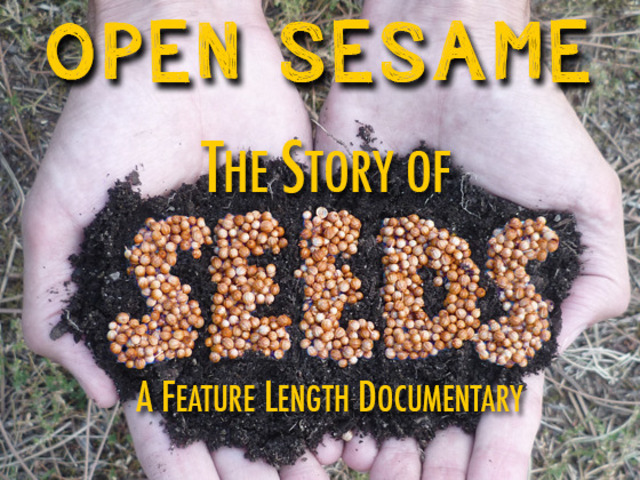
by DGR News Service | Sep 6, 2014 | Agriculture, Education, Lobbying
By Norris Thomlinson / Deep Green Resistance Hawai’i
Open Sesame examines the importance of seeds to humans as the genesis of nearly all our domesticated foods. It details the tremendous loss in varietal diversity of our crops over the last century, due in large part to increasing corporate control over the seed market.
Farmers and gardeners in every region once had access to dozens of varieties of each vegetable and staple crop, finely adapted to the specific growing season, temperatures, rainfall patterns, insects, diseases, and soils of their area. With few people now saving their own seed, we’ve entrusted our food supply to a handful of seed companies selling the same handful of varieties to growers across the US. This will prove increasingly problematic as climate chaos increases divergence from climatic norms. We need a return to seed saving and breeding of numerous local varieties, each starting from a baseline adaptation to the specific conditions of each area. Diversity gives a better chance of avoiding complete catastrophic crop failure; this variety may yield in the heavy rains of one year, while that variety may succeed in the drought of the next.
The film shows beautiful time lapse sequences of seeds sprouting and shooting into new life. Even rarer, it shows people feeling very emotional about seeds, displaying extra-human connections we normally only see with domesticated pets, and hinting at the human responsibility of respectful relationship with all beings described by so many indigenous people. The movie highlights great projects from seed schools and the Seed Broadcast truck educating people on why and how to save seed, to William Woys Weaver and others within Seed Savers Exchange doing the on-the-ground work of saving varieties from extinction, to Hudson Valley Seed Library trying to create a viable business as a local organic seed company.
Civilization and Agriculture
Unfortunately, Open Sesame has an extremely narrow focus. Though it rightly brings up the issue of staple crops, which many people ignore in their focus on vegetables, it trumpets our dependence on grains, even showing factory farmed cattle, pigs, and chickens in an uncritical light. This assumption that humans need annual crops reveals an ignorance of agriculture itself as a root cause of our converging environmental crises. Even before industrialism accelerated the destruction and oppression, civilization and its cities, fed by organic agriculture, was eroding soil, silting up waterways, turning forests into deserts, and instituting slavery and warfare. Though the diminished diversity within our food crops should indeed cause concern, the far greater biodiversity loss of mass species extinctions under organic agriculture should spark great alarm, if not outright panic.
In one scene, the documentary shows a nighttime urban view of industrial vehicles and electric lights, bringing to mind the planetary destruction enacted by the creation and operation of these technologies. Beneath the surface, this scene contains further social and imperialistic implications of packing humans into artificial and barren environments. The residents of this scene are fully reliant on imported food and other resources, often stolen directly, and all grown or mined from land stolen from its original human and non-human inhabitants. But the film goes on to point out, without any irony, that all civilizations began with humans planting seeds, as if the only problem we face now is that industrialization and corporate control applied to agriculture threaten the stability of otherwise beneficial systems.
In a similar disconnect, Open Sesame proclaims the wonders of gardening, farming, and “being in nature” while showing simplified ecosystem after simplified ecosystem ― annual gardens and fields with trees present only in the background, if at all. As any student of permaculture or of nature could tell you, the disturbed soil shown in these human constructions is antithetical to soil building, biodiversity, and sustainability. The film describes seeds “needing” our love and nurturing to grow, positioning us as stewards and playing dangerously into the dominating myth of human supremacism. Such dependence may (or may not) be true of many of our domesticated crops and animals, but I think it crucial to explicitly recognize that in indigenous cultures, humans are just one of many equal species living in mutual dependence.
Though the documentary chose not to tackle those big-picture issues, it still could have included perennial polycultures, groups of long-lived plants and animals living and interacting together in support of their community. For 99% of our existence, humans met our needs primarily from perennial polycultures, the only method proven to be sustainable. The film could have chosen from hundreds of modern examples of production of vegetables, fruit, and staple foods from perennial vegetable gardens, food forests, and grazing operations using rotating paddocks. Even simplified systems of orchards and nutteries would have shown some diversity in food production options. Besides being inherently more sustainable in building topsoil and creating habitat, such systems rely much less on seed companies and help subvert their control.
Liberal vs Radical
The Deep Green Resistance Youtube Channel has an excellent comparison of Liberal vs Radical ways of analyzing and addressing problems. In short, liberalism focuses on individual mindsets and changing individual attitudes, and thus prioritizes education for achieving social change. Radicalism recognizes that some classes wield more power than others and directly benefit from the oppressions and problems of civilization. Radicalism holds these are not “mistakes” out of which people can be educated; we need to confront and dismantle systems of power, and redistribute that power. Both approaches are necessary: we need to stop the ability of the powerful to destroy the planet, and simultaneously to repair and rebuild local systems. But as a radical environmentalist, I found the exclusively liberal focus of Open Sesame disappointing. There’s nothing inherently wrong with its take on seed sovereignty; the film is good for what it is; and I’m in no way criticizing the interviewees doing such great and important work around seed saving and education. But there are already so many liberal analyses and proposed solutions in the environmental realm that this film’s treatment doesn’t really add anything new to the discussion.
A huge challenge I have with liberal environmentalism is its leap of logic in getting from here (a world in crisis) to there (a truly sustainable planet, with more topsoil and biodiversity every year than the year before.) Open Sesame is no exception: it has interview after interview of individuals carrying out individual actions: valuable, but necessarily limited. Gary Nabham speaks with relief on a few crop varieties saved from extinction by heroic individual effort, but no reflection is made on the reality of how much we’ve lost and the inadequacy of this individualist response. We see scene after scene of education efforts, especially of children. We’re left with a vague hope that more and more people will save their own seed, eventually leading to a majority reclaiming control over their plantings while the powerful agribusiness corporations just fade away. This ignores the institutional blocks deliberately put in place precisely by those powerful companies.
The only direct confrontation shown is a defensive lawsuit begging that Monsanto not be allowed to sue farmers whose crops are contaminated by patented GMOs from nearby fields. The lawsuit isn’t even successful, and the defeated farmers and activists are shown weary and dejected, but with a fuzzy determination that they can win justice if they keep trying hard enough. The film could instead have built on this example of the institutionalized power we’re up against and explored more radical approaches to force change. Still within the legal realm, CELDF (Community Environmental Legal Defense Fund) helps communities draft and pass ordinances banning things like factory farming, removing corporate personhood, and giving legal rights to nature within a municipality or county. Under such an ordinance, humans could initiate a lawsuit against agricultural operations leaching chemicals and sediment, on behalf of an impacted river. This radical redistribution of decision making directly confronts those in power and denies them the right to use it against the community and the land.
In the non-legal realm, underground direct attacks and aboveground nonviolent civil disobedience have successfully set back operations when people have cut down GMO papayas, burned GMO sugar beets, and sabotaged multiple fields and vineyards. The ultimate effectiveness of these attacks deserves a whole discussion in and of itself, but they would have been worth mentioning as one possible tactic for ending agribusiness domination of our food supplies.
In a perfect demonstration of the magical thinking that wanting something badly enough will make it happen, the documentary concludes with a succession of people chanting “Open sesame!” We’ve had 50 years of experience with this sort of environmentalism, long enough to know it’s not working. We also know that we, and the planet, have no time left to waste. We need to be strategic and smart in our opposition to perpetrators of destruction and in our healing of the damage already done. The Decisive Ecological Warfare strategy of Deep Green Resistance offers a possible plan for success, incorporating all kinds of people with all kinds of skills in all kinds of roles. If you care about the world and want to change where we’re headed, please read it, reflect on it, and get involved in whatever way makes the most sense for you.









